
Automation Frameworks: A Complete Beginner’s Guide
Oct 10, 2025 5 Min Read 1608 Views
(Last Updated)
Have you ever wondered how software companies manage to test large applications so efficiently, especially when time is limited? That’s where automation frameworks come into play.
If you’re just starting in the field of software testing or development, understanding automation frameworks can give you a solid edge in building robust, maintainable, and scalable test suites.
In this article, we’ll walk you through everything you need to know about automation frameworks, from what they are, why they matter, how they work, and the different types that exist. We’ll also explore some real-world tools and provide a glimpse into how companies use them across various industries. So, without further ado, let us get started!
Table of contents
- What is an Automation Framework?
- Why Are Automation Frameworks Important?
- How Do Automation Frameworks Work?
- Test Planning
- Framework Setup
- Script Creation
- Data Handling
- Test Execution
- Reporting
- Maintenance
- Midway Interactive Challenge on Automation Frameworks
- Types of Automation Frameworks
- Linear Scripting Framework
- Modular Testing Framework
- Data-Driven Framework
- Keyword-Driven Framework
- Hybrid Framework
- Behavior-Driven Development (BDD) Framework
- Popular Automation Framework Tools
- Where Are Automation Frameworks Used?
- Best Practices for Automation Frameworks
- Start with Clear Goals
- Keep It Modular and Reusable
- Separate Test Data from Scripts
- Include Logging and Reporting
- Use Version Control
- Conclusion
- FAQs
- What is a test automation framework?
- What are the main benefits of automation frameworks?
- What are the common types of automation frameworks?
- What are the main steps in test automation lifecycle?
- How do I choose the right automation tool?
What is an Automation Framework?
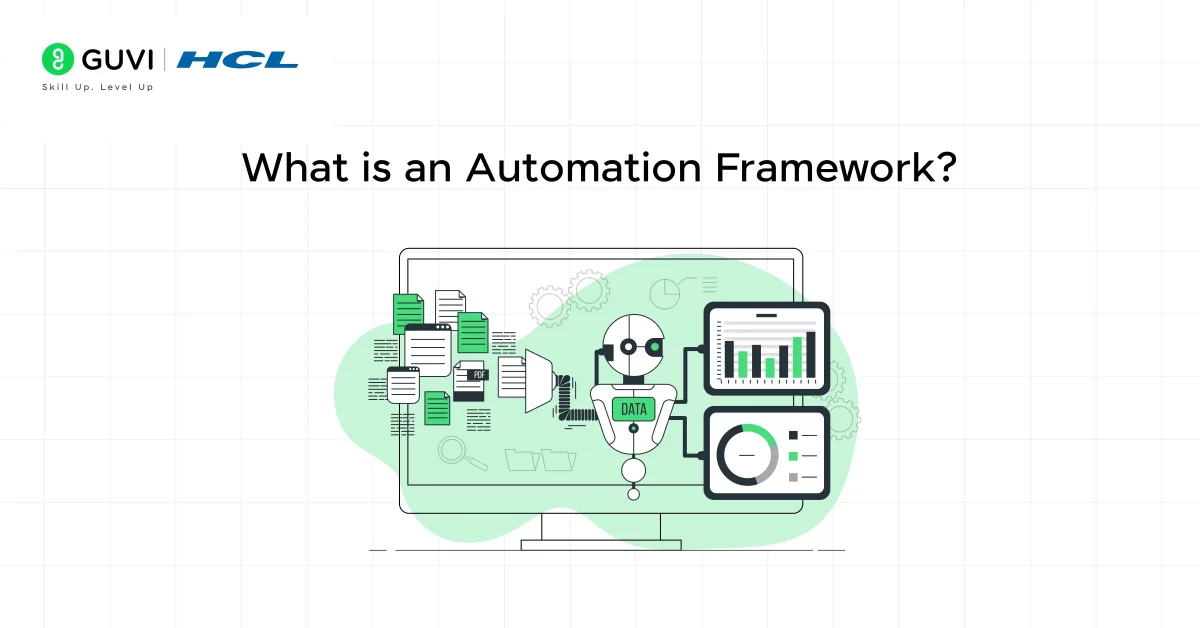
An automation framework is a structured set of guidelines, best practices, tools, and libraries used to create and execute test cases effectively. Think of it as a blueprint or architecture that helps automate repetitive testing tasks with minimal human intervention.
At its core, a framework provides:
- A common platform for testers
- Reusable components (functions, libraries, data sets)
- Consistent coding standards
- Integration with reporting, logging, and CI/CD tools
Automation frameworks aren’t a specific tool like Selenium or Cypress, but more of a design pattern that makes automation scalable and maintainable.
Why Are Automation Frameworks Important?
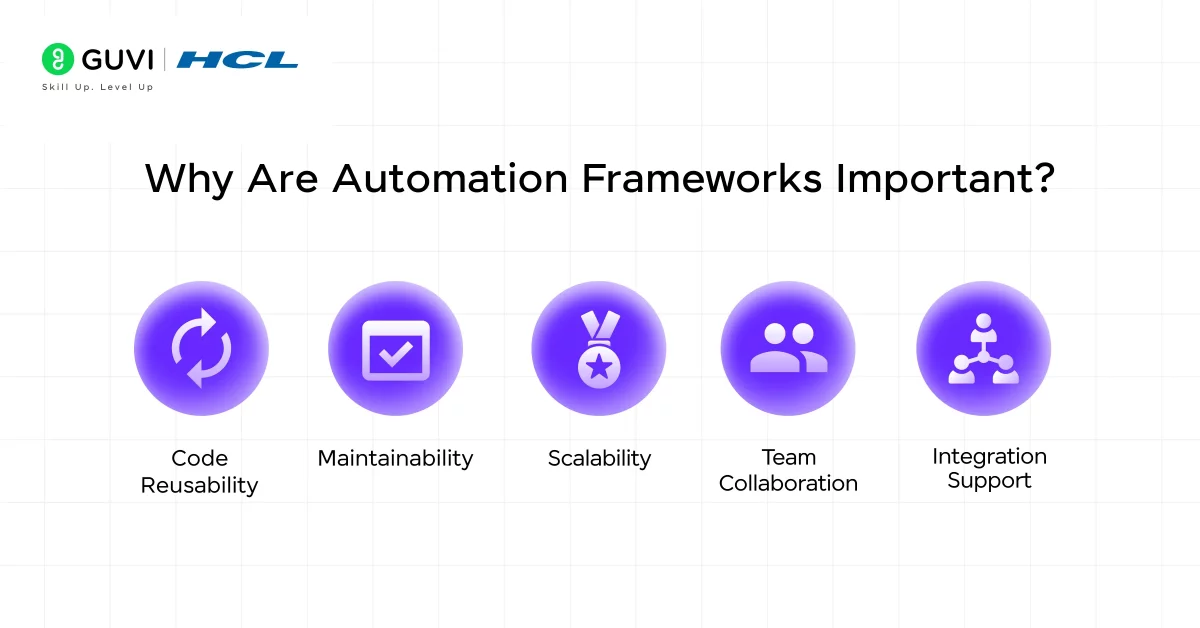
You might ask: “Why not just write a simple test script and be done with it?” While that works in small projects, things quickly become messy as the test suite grows. Here’s why frameworks are essential:
- Code Reusability: Frameworks allow you to reuse components (like login methods, and browser setup) across multiple tests, reducing duplication.
- Maintainability: If something changes in the UI or logic, you only need to update the code in one place.
- Scalability: Well-structured frameworks can handle hundreds or thousands of test cases without falling apart.
- Team Collaboration: Frameworks provide a standard approach that multiple testers and developers can follow, making collaboration smoother.
- Integration Support: Most frameworks are compatible with tools like Jenkins, Allure, TestNG, and GitHub, which helps in creating a fully automated DevOps pipeline.
How Do Automation Frameworks Work?
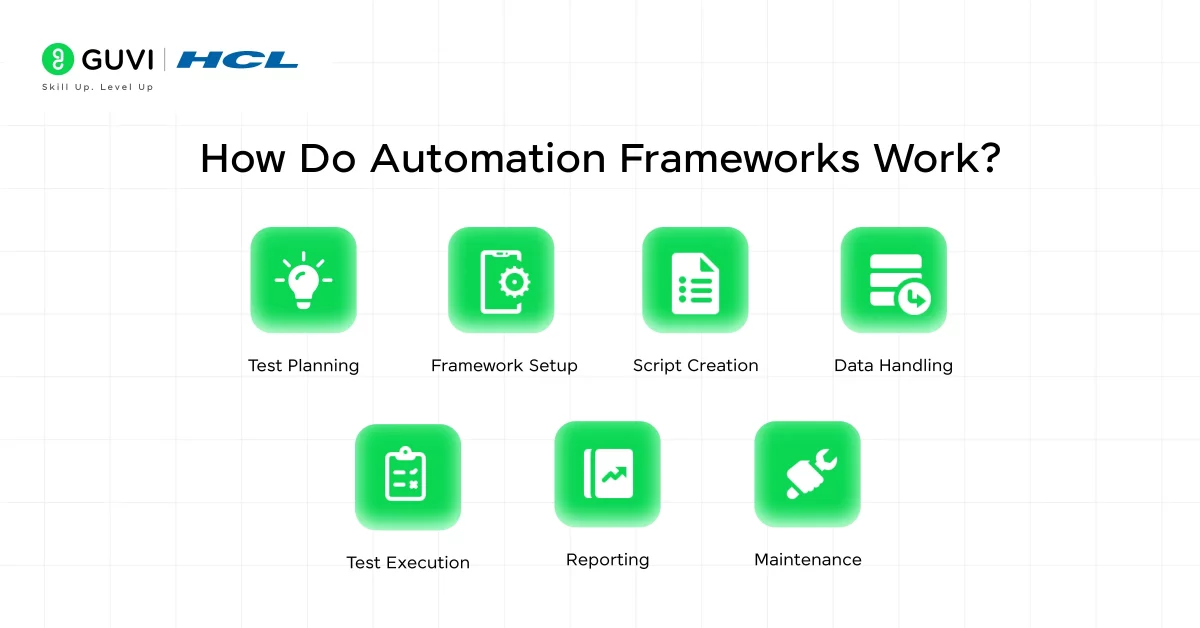
Automation frameworks follow a systematic process to ensure tests are structured, reusable, and scalable. Whether you’re using Selenium, Cypress, or any other tool, the workflow of a framework typically involves the following key stages:
1. Test Planning
Before writing any automation script, it’s important to outline the goals. This includes identifying what needs to be tested, understanding the user flows, defining test coverage, and deciding on the scope of automation.
You’ll also evaluate tools and frameworks that suit the project based on factors like:
- Application type (web, mobile, desktop)
- Language familiarity (Java, Python, JavaScript)
- Integration needs (CI/CD pipelines, reporting tools)
2. Framework Setup
Once you finalize the tools, the next step is setting up the automation framework. This includes:
- Installing dependencies (Selenium, PyTest, TestNG, etc.)
- Organizing your folder structure (tests, data, utilities, reports)
- Setting up configuration files (such as environment details, base URLs, or credentials)
A typical folder structure may look like this:
/tests
login_test.py
checkout_test.py
/utilities
browser_setup.py
helpers.py
/data
test_data.jsonThis structure helps isolate and organize code components for better maintainability.
3. Script Creation
After the setup, you start creating test scripts. Scripts should be modular and reusable. Common practices include using design patterns like the Page Object Model (POM), which separates element locators from test logic.
For example, instead of writing locators repeatedly, you define them in a class:
class LoginPage:
username_input = "input#username"
password_input = "input#password"
login_button = "button#submit"Then you call them across various tests, making the code easier to maintain.
4. Data Handling
Automation frameworks often separate test data from test scripts. This allows the same script to run with multiple data inputs. Data can come from:
- Excel sheets
- CSV files
- JSON or XML files
- Databases
By using a data-driven approach, you ensure the same scenario is tested under different conditions, improving test coverage.
5. Test Execution
Once the scripts are ready and data is in place, you can execute tests using various methods:
- Manually from the command line or IDE
- Automatically via Continuous Integration tools like Jenkins or GitHub Actions
- Remotely on cloud services like BrowserStack or Selenium Grid
Execution can be done in headless mode, parallel mode, or on specific browsers/environments, depending on the test strategy.
6. Reporting
After execution, the results are captured and compiled into reports. Good reporting is essential for stakeholders to understand what passed, what failed, and where the issues lie.
Popular reporting tools include:
- Allure
- ExtentReports
- HTMLTestRunner
- TestNG built-in reports
Reports often include logs, stack traces, and screenshots of failed tests.
7. Maintenance
Over time, applications evolve, and so should your tests. Changes in the UI, logic, or data flow require regular updates to locators, test flows, and validations.
Maintaining a clean and modular framework ensures that these changes can be applied quickly and efficiently, without rewriting everything from scratch.
Midway Interactive Challenge on Automation Frameworks
Create a basic modular framework in your preferred language (Java, Python, or JS) to automate the login functionality of any public website (like Gmail or Amazon).
Break it down into three files:
- A file for browser setup
- A reusable function for login
- A test script that calls the login method
Once done, try changing the username/password and observe how your framework handles different inputs.
Types of Automation Frameworks
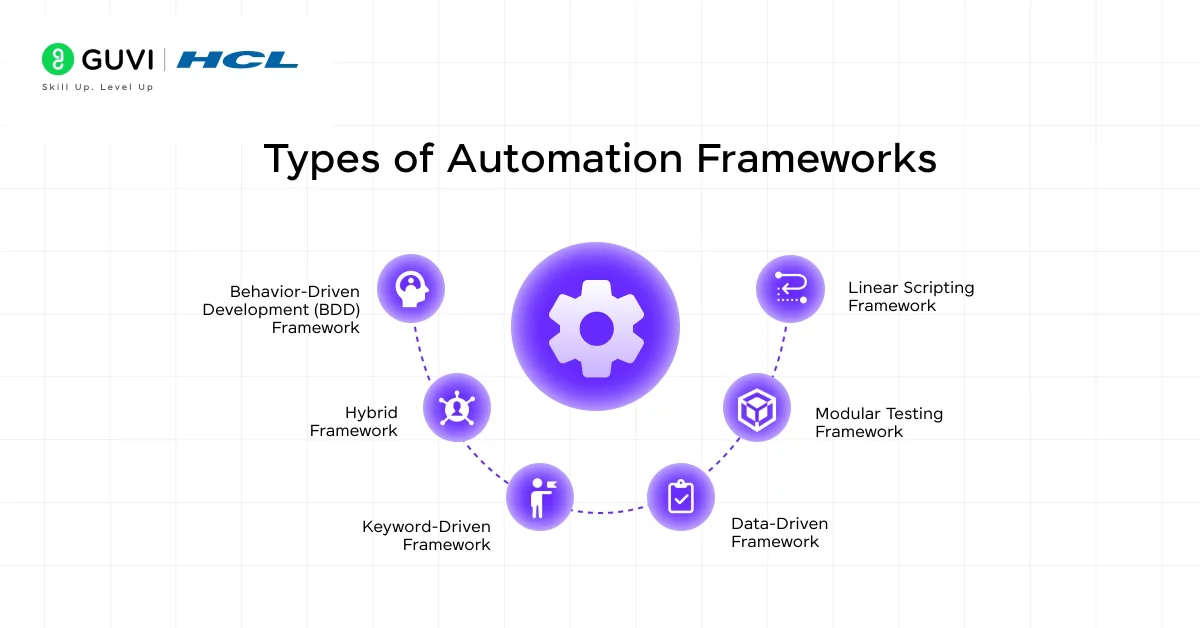
Not all automation frameworks are created equal. Depending on your requirements, skill level, and team collaboration needs, you might choose one or combine several of the following frameworks:
1. Linear Scripting Framework
Also known as the record-and-playback framework, this is the most basic form of automation. Tools record user actions and replay them as tests.
Best suited for: Small applications or teams with no programming experience.
Pros:
- Easy to set up
- Minimal learning curve
Cons:
- Scripts are hard-coded and not reusable
- Difficult to maintain over time
Example tools: Selenium IDE, Katalon Recorder
2. Modular Testing Framework
This framework breaks the application into smaller, independent modules. Each module performs a specific task and is invoked as needed.
Pros:
- Encourages code reuse
- Easier to update when modules change
Cons:
- Test data is often embedded in the script
Use case: Ideal for projects where application flow is well-defined and repetitive actions occur across test cases.
3. Data-Driven Framework
In this approach, the test logic is separated from test data. Scripts read input values from external files and iterate through them during execution.
Pros:
- Allows easy testing of multiple data sets
- Reduces code duplication
Cons:
- Requires additional logic to handle data reading and mapping
Example formats: Excel, CSV, JSON, or databases
Common tools: TestNG, Pytest, Apache POI, openpyxl
4. Keyword-Driven Framework
Here, test steps are defined using keywords such as “Click”, “EnterText”, or “Verify”. These are mapped to underlying functions that perform actual operations.
Pros:
- Test cases can be written in simple text or Excel files
- Non-developers can contribute to test writing
Cons:
- More abstract, so setup time is longer
- Can become bulky if not managed properly
Popular tools: Robot Framework, Katalon Studio
5. Hybrid Framework
This combines features of two or more frameworks. For instance, you might have modular design combined with data-driven test execution and keyword-driven steps.
Pros:
- Flexible and scalable
- Tailored to specific project needs
Cons:
- Complex to build and maintain
- Requires skilled team members
6. Behavior-Driven Development (BDD) Framework
BDD uses plain English syntax (Gherkin) to define test cases. The idea is to make tests understandable by non-technical stakeholders.
Typical structure:
Given I am on the login page
When I enter valid credentials
Then I should be logged in
Pros:
- Encourages collaboration between developers, testers, and business teams
- Highly readable and business-aligned
Cons:
- Requires setup of additional tools and frameworks
- Learning Gherkin syntax is necessary
Popular tools: Cucumber (Java), Behave (Python), SpecFlow (.NET)
Popular Automation Framework Tools
Let’s take a look at some of the widely used automation framework tools and what they’re best suited for:
| Tool | Use Case | Language Support |
| Selenium | Web application testing | Java, Python, C#, Ruby |
| Cypress | Front-end modern web testing | JavaScript |
| Playwright | Cross-browser web testing | JavaScript, Python |
| Appium | Mobile automation (Android/iOS) | Java, Python, JavaScript |
| Robot Framework | Keyword-driven & hybrid testing | Python |
| TestNG | Test orchestration & reporting | Java |
| JUnit/PyTest | Unit + automation test base | Java/Python |
| Katalon Studio | Low-code test creation | Built-in IDE |
Where Are Automation Frameworks Used?
While automation frameworks can be applied to nearly every domain, here are some brief industry-specific examples:
- E-commerce: Regression and smoke testing of product listings, carts, and payments.
- Banking & Finance: High-priority regression tests for transaction workflows and dashboards.
- Healthcare: Validation of appointment scheduling, patient records, and compliance flows.
- EdTech: Continuous testing of course modules, quizzes, and video streaming.
- SaaS & CRM: End-to-end testing of forms, email flows, and user permissions.
Each of these industries relies on automation to release features faster without compromising quality.
Best Practices for Automation Frameworks
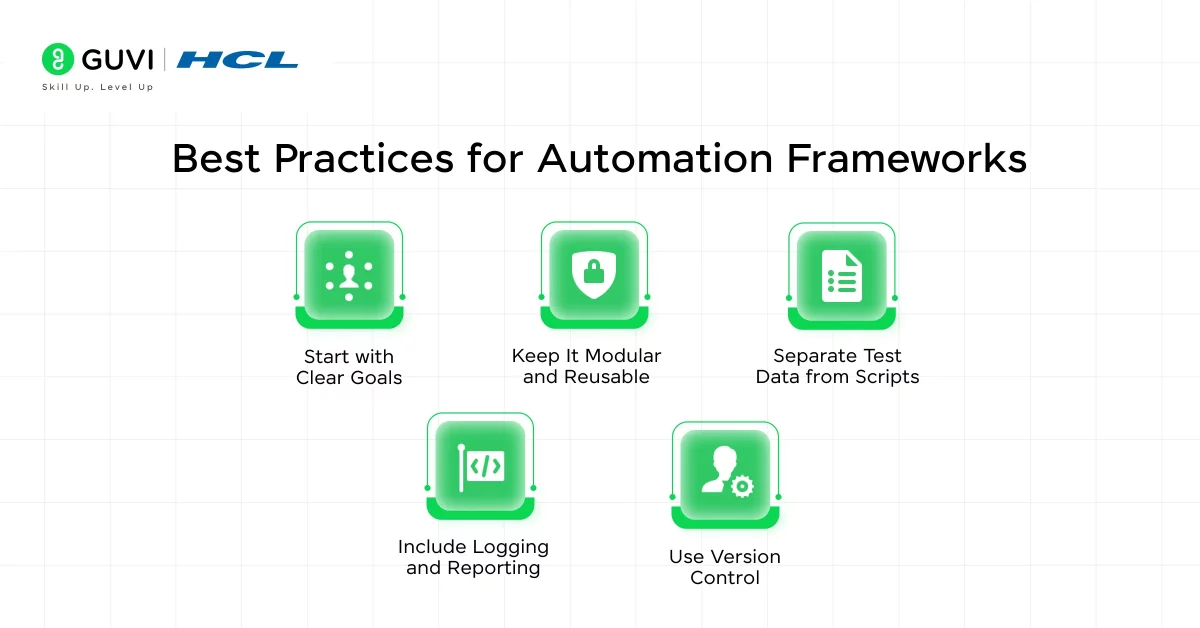
Whether you’re building a basic or advanced automation framework, following industry best practices can save time, reduce bugs, and enhance collaboration across teams.
1. Start with Clear Goals
Don’t jump into automation without understanding what needs to be automated and why. Begin with high-priority, repetitive test cases that have stable requirements. Avoid automating tests that frequently change or require human intuition.
2. Keep It Modular and Reusable
Design your framework with modularity in mind. Break down large scripts into smaller, reusable functions. This not only makes maintenance easier but also promotes cleaner code.
Use the Page Object Model (POM) to manage UI locators and actions. Instead of hardcoding element references in every script, define them in separate files or classes and call them as needed.
3. Separate Test Data from Scripts
Centralize your test data in external files. This approach allows you to run the same test logic with multiple data sets, covering more scenarios without duplicating code.
Store configuration and environment-specific data separately as well. This makes it easier to switch between development, staging, and production environments without changing the code.
4. Include Logging and Reporting
Integrate proper logging mechanisms to capture key events, errors, and execution steps. In case a test fails, logs help diagnose the problem faster.
Also, generate readable reports that can be shared with QA teams, developers, or stakeholders. Reports should include test names, status (pass/fail), error messages, and screenshots where necessary.
5. Use Version Control
Keep your framework under version control using tools like Git. Create branches for new features or bug fixes, and use pull requests for code reviews. This helps maintain code quality and fosters team collaboration.
If you want to learn more about Automation Testing through Selenium, consider enrolling in HCL GUVI’s Selenium Automation Testing Course, which teaches you everything from scratch and lets you master in-demand skills like Selenium, Python, Jenkins, Jmeter, API Testing, and more with an industry-grade certificate at the end!
Conclusion
In conclusion, automation frameworks are the backbone of efficient and reliable software testing. For beginners, understanding how they work, the types available, and the best practices to follow can make a significant difference in how you approach testing projects.
As the demand for faster releases and higher quality grows, investing time in learning and building robust automation frameworks will give you a strong foundation for a successful career in software testing or quality engineering.
Start small, stay consistent, and evolve your framework as you grow—because in automation, structure and strategy are everything.
FAQs
1. What is a test automation framework?
A test automation framework is a structured set of tools, libraries, and best practices used to create and run automated tests. It helps organize test scripts, data, and reports efficiently. This structure improves test reliability, scalability, and maintainability.
2. What are the main benefits of automation frameworks?
Automation frameworks reduce manual effort, speed up testing, and improve accuracy. They promote code reuse, simplify maintenance, and support continuous integration. Overall, they streamline the software testing lifecycle.
3. What are the common types of automation frameworks?
Common types include linear, modular, data-driven, keyword-driven, hybrid, and BDD frameworks. Each serves different needs—from simple record-playback to business-readable test scenarios. Choosing the right one depends on your project complexity and team skills.
4. What are the main steps in test automation lifecycle?
The automation lifecycle includes planning, framework setup, script development, test execution, reporting, and maintenance. Each step ensures reliable and efficient testing. This cycle helps teams release faster with fewer bugs.
5. How do I choose the right automation tool?
Choose based on application type, supported languages, team expertise, and integration needs. Also consider cost, community support, and ease of use. The right tool fits your tech stack and long-term testing goals.








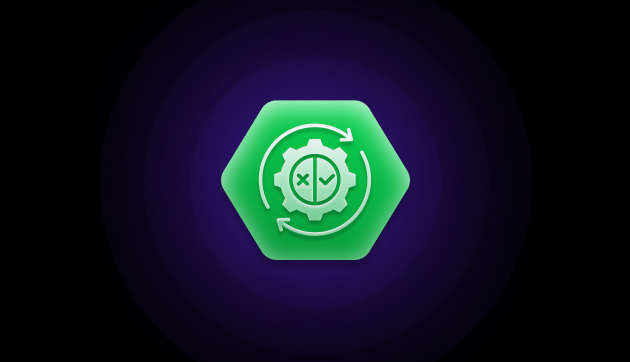
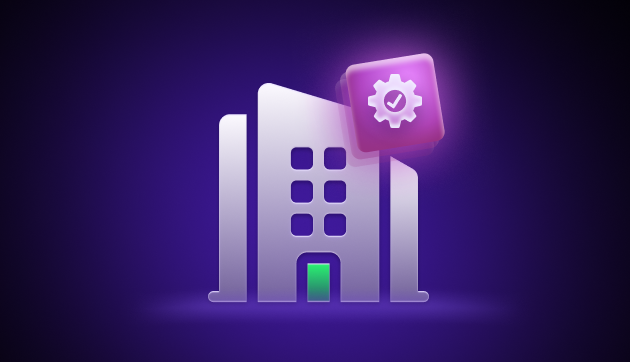
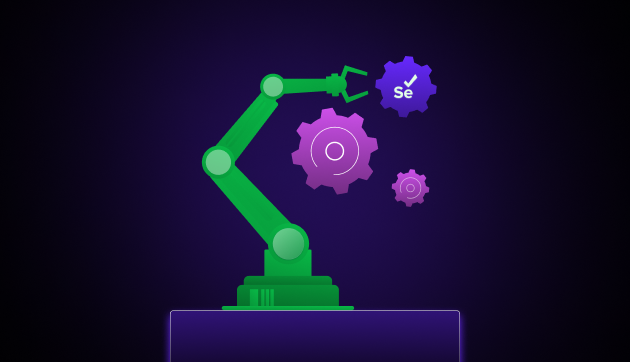




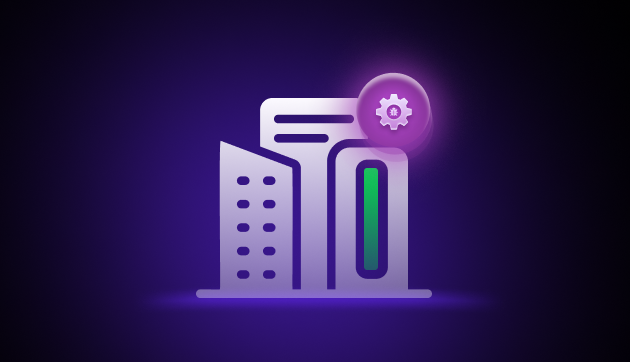




Did you enjoy this article?